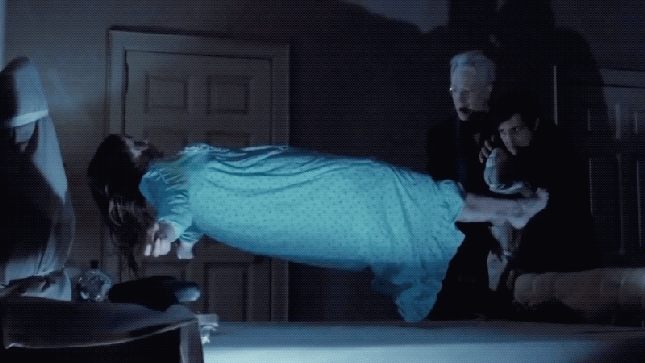

It is impossible to discuss William Friedkin’s 1973 film adaptation of the William Peter Blatty novel The Exorcist without discussing its effect on culture. This is true for a lot of art, especially during a time when cultural effects unspool in real time (on social media, for example) and when watching such unspooling is part of the entertainment experience itself. And yet, not a lot of art can say it made the profound impact that The Exorcist did. It was a cultural sensation, a movie of such high demand that the lines for it wrapping around theaters made it a literal blockbuster. The extreme reactions of moviegoers, including fainting and vomiting, were so widely documented that film historian William Paul said the film’s audience “had become a spectacle equal to the film.” It was the first horror film to be nominated for a Best Picture Academy Award, and as such has been credited for legitimizing the genre (though whatever that was worth was probably undone several times over by the proliferation of gratuitous and dimwitted slasher and exploitation fare in the decade and a half that followed). It revived an ancient Catholic rite and prompted many reported suspicions of possession in its wake. (The good old availability heuristic rears its head yet again.) The Exorcist, plain and simply, bedeviled audiences, crawling under moviegoers’ collective skin and infecting them like a curse.
That was a gift to its studio, but in the years since, it has given the film a reputation that is impossible to live up to. Clearly, the extreme audience reaction was primarily in response to the scenes depicting the demonic possession of the young girl Regan (Linda Blair). But once you’ve seen her levitate and thrash and heard her growl, “Your mother sucks cocks in Hell,” (which actually makes Hell seem like it might not be that bad—at least there’s available dick), and once you have been subsequently inundated with references that high-impact cinema tends to proliferate in culture, you’re left with a shell of a movie that was once full of shocks.
-

-

-

-

-

-

-

-

-

-

-

-

-

-

-

-

-

-

-

-

-

-

-

-

-

-

-

-

-

-

-

-

-

-

-

-

-

-

-

-








































